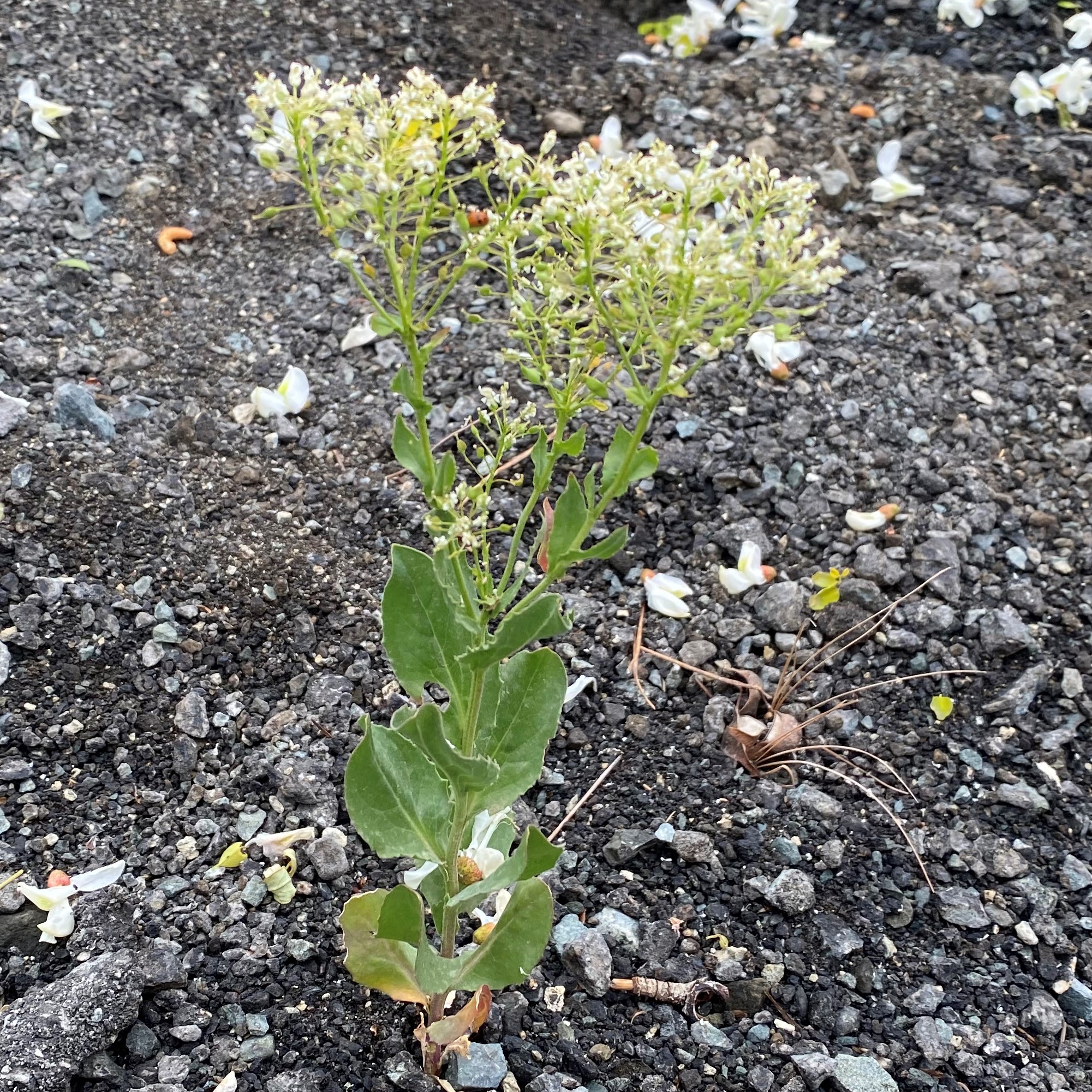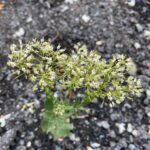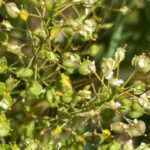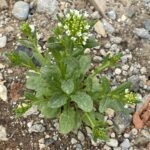Λεπίδιο το δράβα υποείδος το δράβα
Etymology of Lepidium draba subspecies draba
Swedish botanist Carl Linnaeus (1707-1778) named the Lepidium genus in 1753. "Λεπίδιον" [lepidhion] is the Ancient Greek for "little blade" and it is said to refer to a scale on the seed pod. "Draba", was also named by Linnaeus and it is supposed to derive from the Ancient Greek "δράβα" or "δράβη", which was used to describe the species Lepidium draba, but its etymology is unknown (according to Linnaeus it means "acrid").
Lepidiums in Cyprus
There are 9 taxa of Lepidium in Cyprus, deriving from 8 species.
Lepidium draba subspecies draba is said to exist in many regions of Cyprus but not in that of Akamas. Lepidium draba subsp. draba is found in a wide range of habitats ranging from roadsides (highly disturbed sites) to rangelands, meadows and pastures, cultivated fields, home gardens, and wastelands. It is encountered up to an altitude of 1700 metres and its flowering period is from March until June. The specimens of the pictures were photographed in Kato Platres and Troodos Square (Lemesos).
How to identify Lepidium draba subsp. draba
Lepidium draba subspecies draba is very similar to Lepidium draba subspecies chalepense. These two subspecies of Hoary Cress (Lepidium draba, now often classified as Cardaria draba) share many similarities, but there are some distinguishing characteristics:
Fruit (Silicle) Shape and Size
Lepidium draba subsp. chalepense: The silicles (the dry, flattened, two-valved fruit) are typically described as heart-shaped (cordate), with the apical notch being more pronounced and often wider. They tend to be slightly smaller than those of subsp. draba, usually ranging from 3-5 mm long and 3-5 mm wide, appearing somewhat lens-shaped or compressed-globose to broadly obcordate. The silicles are typically described as glabrous (hairless).
Lepidium draba subsp. draba: The silicles are not heart-shaped but appear broader and less distinctly cordate, sometimes more rounded or subcordate. The apical notch might be present but less pronounced. They are generally slightly larger, typically ranging from 4-6 mm long and 4-6 mm wide. The silicles are also usually glabrous, but some descriptions might mention occasional sparse hairs or papillae, especially when young. However, both are predominantly hairless.
Pedicel Length
Lepidium draba subsp. chalepense: The pedicels are usually ranging from 8-15 mm in fruit.
Lepidium draba subsp. draba: The pedicels are generally shorter, usually ranging from 5-10 mm in fruit.
Stem Leaves and Auricles
Lepidium draba subsp. chalepense: The stem leaves are often described as having more prominent and sharper auricles (ear-like lobes at the base of the leaf that clasp the stem), backwards-pointing.
Lepidium draba subsp. draba: The stem leaves also have auricles, but they are more rounded (less sharply pointed or backwards-pointing).




